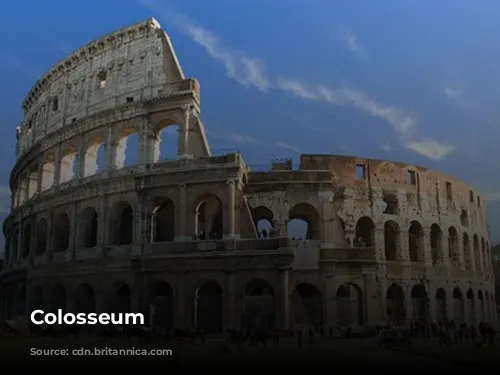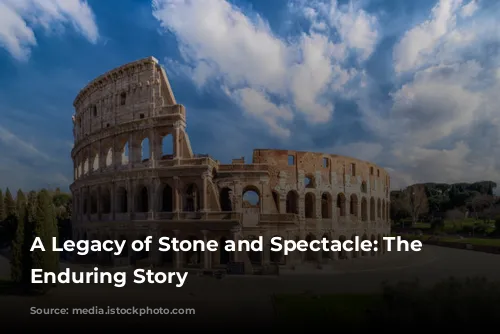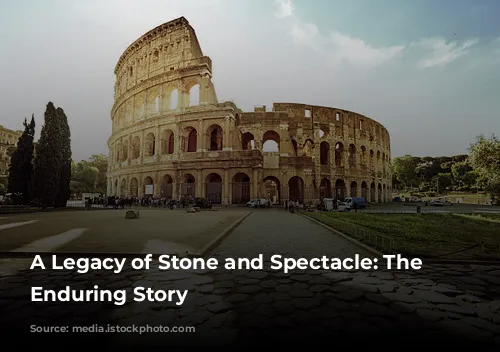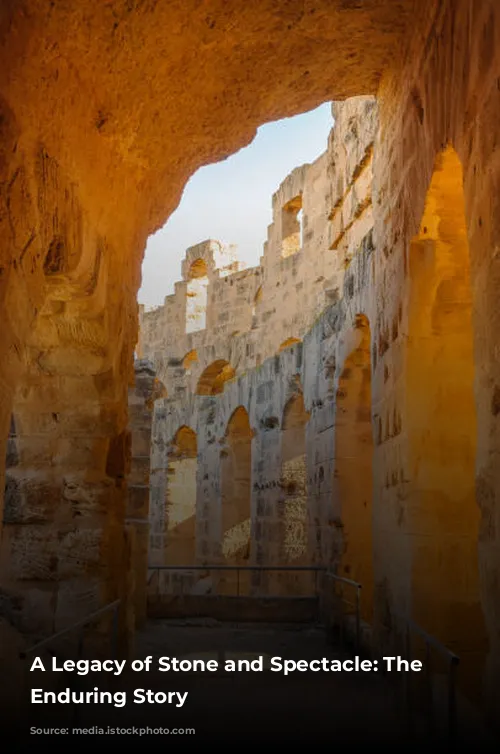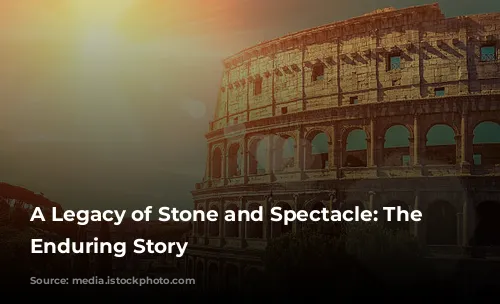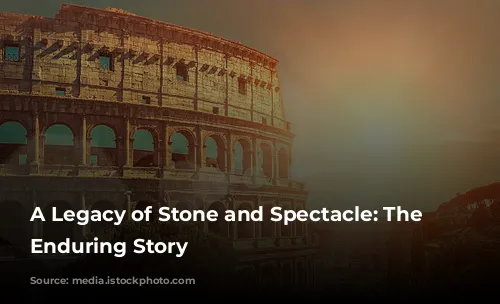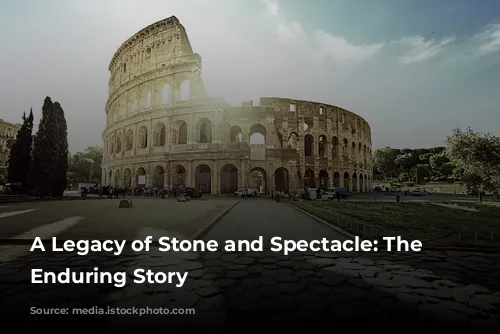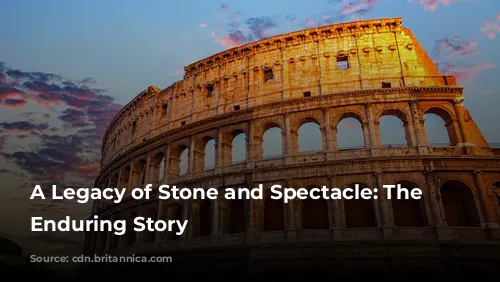The Colosseum stands as a powerful symbol of the Roman Empire’s architectural brilliance and engineering prowess. It is one of the few structures from that era that remains largely intact. Today, the Colosseum draws thousands of visitors every year, making it a vital source of income for the Italian government. In 2018 alone, the Colosseum, the Roman Forum, and Palatine Hill combined to generate over $63.3 million (€53.8 million), making it the most profitable tourist attraction in Italy.
The Colosseum’s story, however, is a tapestry woven with threads of glory, neglect, and restoration. After the fall of the Western Roman Empire, the Colosseum fell into a state of significant disrepair. During the 12th century, the Frangipane and Annibaldi families took control of the arena, transforming it into a fortress. In the 15th century, Pope Alexander VI allowed the Colosseum to be used as a quarry, its stones stripped away for other building projects. After over a thousand years of being left to crumble, state-funded restoration efforts began in the 1990s.
From Emperor’s Vision to Public Arena
The Colosseum was built in a time of political turmoil and grand ambitions. The year 69 CE saw the rise and fall of four emperors, leaving Rome in a state of instability. To quell the chaos and revitalize the city, Emperor Vespasian envisioned a grand spectacle that would unify the Roman people: the Colosseum.
Like other amphitheaters of the time, Vespasian intended the Colosseum to be a center of entertainment for the masses. Gladiator fights, animal hunts, and even mock naval battles filled the arena with a thrill of excitement and danger. The Colosseum was a statement of power, a testament to the emperor’s influence, and a way to connect with the common people.
Building a Legacy: The Colosseum’s Construction
Construction of the Colosseum began under Emperor Vespasian between 70 and 72 CE. The finished structure was dedicated by Vespasian’s son and successor, Titus, in 80 CE. Emperor Domitian added the fourth story to the Colosseum in 82 CE. It is worth noting that the Colosseum’s construction was funded by the spoils of war – the plunder from Titus’s conquest of Jerusalem in 70 CE. The labor force consisted of enslaved Jews from Judea, a stark reminder of the empire’s power and its exploitation.

A Monument of Power and Spectacle
The Colosseum, also known as the Flavian Amphitheater, is an elliptical structure built from stone, concrete, and tuff. It rises to four stories, measuring 620 by 513 feet (189 by 156 meters) and with a capacity of up to 50,000 spectators. This awe-inspiring structure was famed for its gladiatorial combat, a brutal form of entertainment that enthralled the Roman public.
A Statement of Imperial Might
The Colosseum’s location was as symbolic as it was practical. It was built just east of the Palatine Hill, on the grounds of Nero’s Golden House, a palace that was a symbol of Nero’s extravagance and tyranny. Vespasian, who rose to power from humble beginnings, chose to replace Nero’s private lake with a public amphitheater, signifying a shift from personal indulgence to public service.
The Colosseum was not simply a structure but a carefully planned and executed statement of imperial might. Its construction involved complex engineering, a variety of materials, and a skilled workforce. The structure’s three lower stories are adorned with arcades framed by engaged columns in the Doric, Ionic, and Corinthian orders, a design that became influential in the Renaissance. The Colosseum was built to impress, to inspire awe in the hearts of Romans and to solidify the emperor’s power.
A Stage for Thrilling Spectacles
The Colosseum’s grandeur extended beyond its size and structure. It featured a massive retractable awning called a velarium, designed to shield spectators from the sun. Hundreds of Roman sailors were needed to manipulate the velarium’s rigging, a testament to the ingenuity and logistics required to host such a grand spectacle. The Colosseum witnessed countless gladiatorial fights, contests between men and animals, and even mock naval battles. Although the Colosseum’s role in the martyrdom of early Christians is uncertain, it remains a powerful symbol of Roman power and its diverse forms of entertainment.
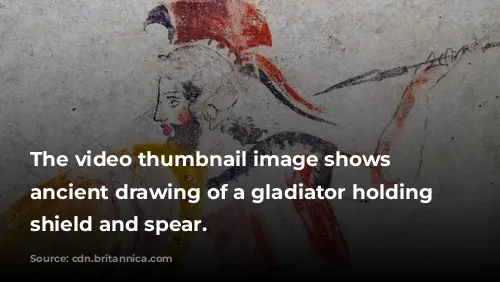
A Legacy of Endurance: The Colosseum’s Survival
The Colosseum’s story extends beyond its construction and use. In the Middle Ages, the Colosseum was repurposed as a church, then as a fortress for prominent Roman families like the Frangipane and the Annibaldi. The Colosseum faced damage from lightning, earthquakes, and, most significantly, vandalism and pollution. Its marble seats and decorative materials were removed, making the site little more than a quarry for over a thousand years.
However, the Colosseum’s resilience is a testament to its enduring strength. Preservation efforts began in earnest in the 19th century, led by Pope Pius VIII, and a full-scale restoration project was undertaken in the 1990s. Today, the Colosseum stands as one of Rome’s most visited tourist attractions, drawing millions of visitors annually. Regular exhibitions showcasing the culture of ancient Rome are held within its walls, keeping the spirit of the past alive.
The Colosseum stands as a monument not only to the Roman Empire’s architectural and engineering prowess but also to its enduring legacy. It is a reminder of a time of grandeur and spectacle, of political ambition and societal change, and of a civilization that, despite its fall, has left an indelible mark on history. Through the Colosseum, we are transported back to a bygone era, a time of emperors and gladiators, of triumph and tragedy, a time that continues to captivate and inspire generations.
